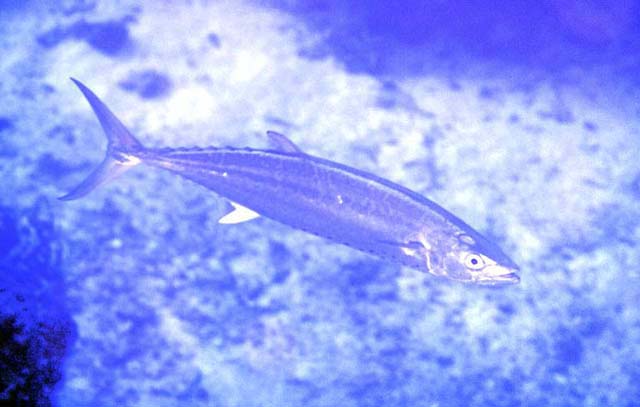| Scombridae (Mackerels, tunas, bonitos), subfamily: Scombrinae |
| 112 cm FL (male/unsexed); max.weight: 14 kg |
|
reef-associated; marine; depth range 15 - 50 m, oceanodromous |
| Western Pacific: known only from the northern coasts of Australia, south to Shark Bay in western Australia, along the east coast of Queensland south to northern New South Wales. Recently reported from the Gulf of Papua (Ref. 9684) and Ouvéa Atoll, Loyalty Islands (Ref. 13236). |
|
Dorsal spines (total): 11-13; Dorsal soft rays (total): 10-12; Anal spines: 0-0; Anal soft rays: 11-13; Vertebrae: 31. Mouth relatively small, upper jaw reaching about to middle of eye. Pectoral fins stout. Interpelvic process short and single. No prominent anterior corselet present. Swim bladder present. Vertebrae 14 precaudal plus 17 caudal, total 31 as in the mackerels (Scomber and Rastrelliger). |
| Form schools near individual bays and reefs in Barrier Reef waters. With the rising tide, they move into shallow water over the reef flats, feeding on schools of clupeoid fishes that concentrate there. Utilized as a food fish. |
|
Least Concern (LC); Date assessed: 05 December 2009 Ref. (130435)
|
| harmless |
Source and more info: www.fishbase.org. For personal, classroom, and other internal use only. Not for publication.

